On September 3, 2023, I attended the Jungle got Soul event in Chicago – hosted by the dnbid crew (DJ’s Stunna, Subverb, Renan, Skrimshaw and Occum’s Razor):
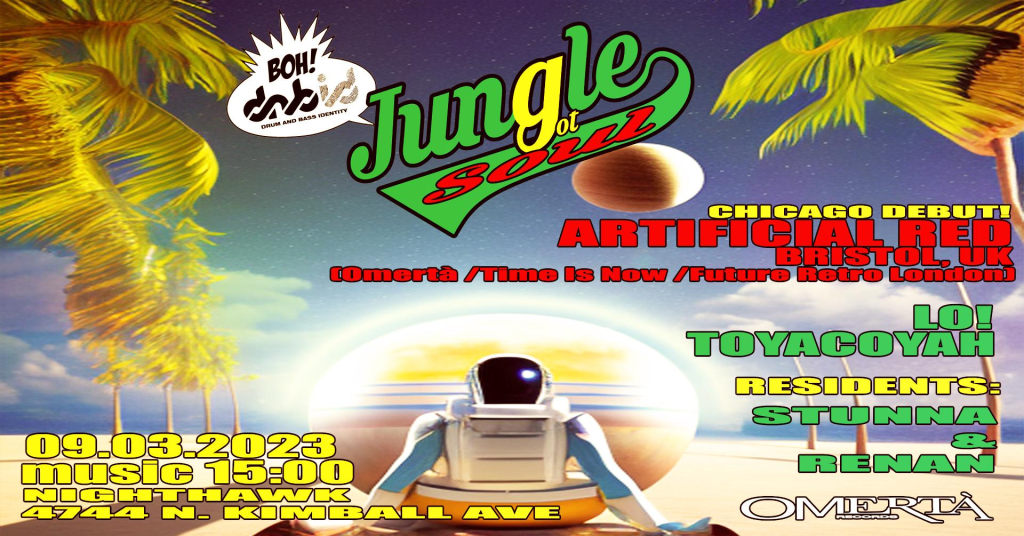
Three sets in, I was impressed by the ambient sounds of DJ Toyacoyah. I looked her up online to learn more about her and saw that she was a member of the Comanche Nation – a rarity, so I decided to have an impromptu dialog with her at the bar where we dished on raves vs. pow-wows, West Coast DJ culture, Brazilian jungle/drum ‘n bass, indigenous hip-hop, Mixed-blood politics, Native representation, tribalism, (sound) medicine, colorism/racism, etc.
M: OK, let’s start with your name. What does it mean?
T: It means “Returning from the War”. I’m named after a great great grandma on my dad’s side. Her name was actually spelled “Toyackkoah”. So, story goes, back in times of war, the women would help the men and provide weapons and reinforcements if needed; so on her way back from helping refill ammunition and what not, my ancestor was born. I think it literally might mean “returning from the mountain” because I’ve seen Toya used as a mountain name before.
M: Cool. So what does it mean to you to be a Comanche DJ in Chicago’s Jungle/Drum ‘n Bass (DnB) scene?
T: Yeah well, honestly, I didn’t grow up 100% around Comanche Nation just because, like, I was born there – born in the Indian hospital – but I only lived in Oklahoma until 7 years and then I moved off to Arizona, California; but I went back to Oklahoma for college. So that’s kinda how I got back in touch with my roots ‘cause there’s…a lot of Natives that go to college up at OU but yeah, no, I definitely see the parallels between pow-wow music and rave culture and stuff like that. People always ask me about that. I’m, like, “definitely”…so yeah, I definitely see the appeal obviously ‘cause I watched my relatives dance – definitely percussion was heavy in the mix, right? So no, who knows? There might be something in the DNA ‘cause I listened to house music, freestyle and all that stuff growing up; but the first time I heard jungle, I was like, “Yo, what the hell is this?” and I didn’t know what it was, right? I went back later, I’m like, “that was ragga jungle.” I’m like, “that was straight up, like, the craziest thing I ever heard in my life.” I really wish I knew what song was playing, who the DJ was but it was like ‘95 – San Francisco. That’s where I first started and my life was pretty much changed after that.
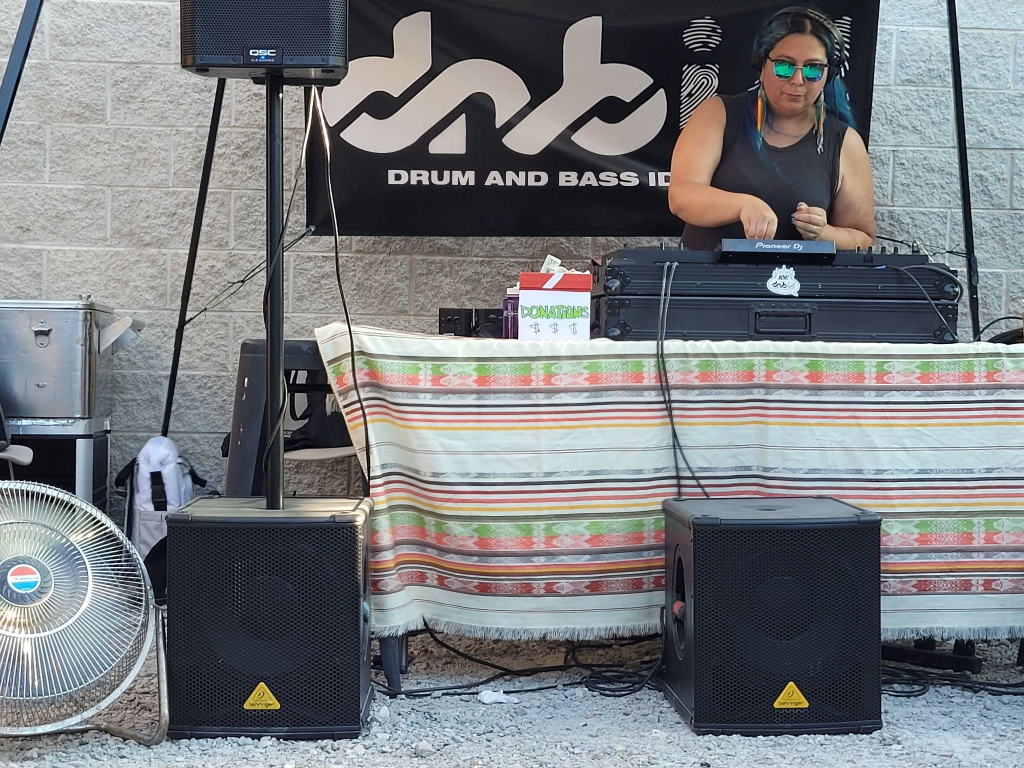
DJ Toyacoyah on the decks @ Jungle got Soul in Chicago.
M: You bring up an interesting point about the cultural or subcultural, at this point, parallels between the Jungle/DnB scene and the First Nations scene – raves versus pow-wows. I think every Junglist has that moment that they can identify where they were like, “Whoa, what is this?”
T: Yeah.
M: “How does this relate to me? I’m here, it’s real…and, now, what am I gonna do?” Obviously, you chose to DJ.
T: Yeah, so I’ve been buying records since I was a kid – like in the ‘80’s. It was always, like hip-hop or, like I said, freestyle or hip-house or whatever; so I was interested in electronic music but, just, I didn’t know it was a DJ culture thing, right?
M: Right.
T: I listened to the radio a lot in California and they’d always have people mixing but I always felt it was more hip-hop; so I knew that culture – turntables and all of that, but I was like, “Oh OK, there’s, like, a whole other thing happening here,” right?
M: Right.
T: So, when I got to college, I started buying stuff and then I went to the radio program there; so then I had a radio show and that’s where I started playing a lot of drum ‘n bass. That’s how I got my practice.
So funny enough the radio station at the time was KXOU but it was only on cable TV since they didn’t have a license or whatever. There was an NPR station I interned at, too, called KGOU. But for the show I had on the cable TV part it was called “Recipe for Chaos”. I think I have an old VHS tape of one night somewhere (laughs). Dragged my 1200s and mixer into the studio for it.
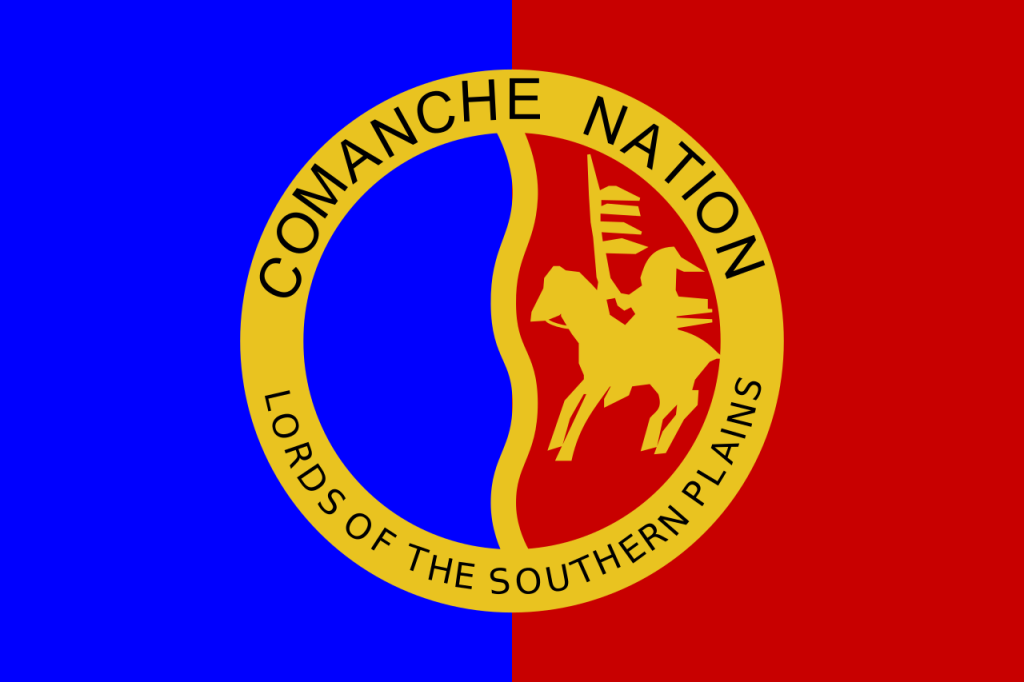
M: What’s the scene like down there in Oklahoma?
T: So, funny enough, there’s a really big scene and it was mainly a lot of hip-hop and rave crossover. One of the biggest crews that was throwing parties was the UAT crew and they’re actually the ones that made me DJ.
The very first time I got a gig was because my friend was throwing a party and they put my name on a flyer and didn’t tell me until, like, a month before the party. He said, “by the way, you’re playing this and start practicing now. And I was like, “WTF, dude?” but I needed that push because I would never do something like that – you know what I mean? – like on my own, so I appreciate that he did that for me and, yeah, that was my first gig – January ‘98 – and no looking back since then.
M: That’s what’s up. Do you feel like a lot of other First Nations people down there kind of had that same synergistic feeling or experience of, like, the rave culture integrated with the pow-wow?
T: Especially if they were into hip-hop culture. I don’t know as far as rave goes, but I definitely noticed it more recently. But that’s also because of the internet, you know – you’re a little more in tune with what other people are doing and I think it helps that people, like in Canada – First Nations – where, like, A Tribe Called Red (are from). They definitely helped solidify…rally the troops…
M: …Yeah, right. Exactly…around hip-hop. Rebel Diaz* is another one representing the First Nations down in Latin America. They have a show coming up at the Old Town School of Folk Music.
T: Oh yeah, I know Indigenous Peoples’ Day is coming up, so they’re having a big…what is it?…one-day concert. I remember they had something last year. I wanted to go to it…but, no, I’m really excited because, like I said, I feel like I see more hip-hop with Indigenous culture. There’s, like, a big appeal there. But that kind of probably goes with social awareness and issues like that. It’s a way to express yourself, you know what I mean?
M: Yeah, totally.
T: So, I feel like that’s a big parallel culture with, like, bringing sh!t up.
M: Definitely.
T: But yeah, no, I actually just played in Minneapolis like two weeks ago (?)
M: Oh Nice! Largest Native urban population in the “United States” (Turtle Island).
T: Well, that was the thing, right? So I remember I saw on the event page, this girl was like, “Wait, she’s indigenous like me? I’m totally coming out.” And she’s like “Representation Matters.” She was so excited. I didn’t know this girl, right? So, the day of the show…I didn’t see that post until the day of…and I was like, “Oh that’s so cute.” And, so, she actually came up while I was DJ’ing. She put a sticker on the CDJs, and it was…this medicine wheel sticker.
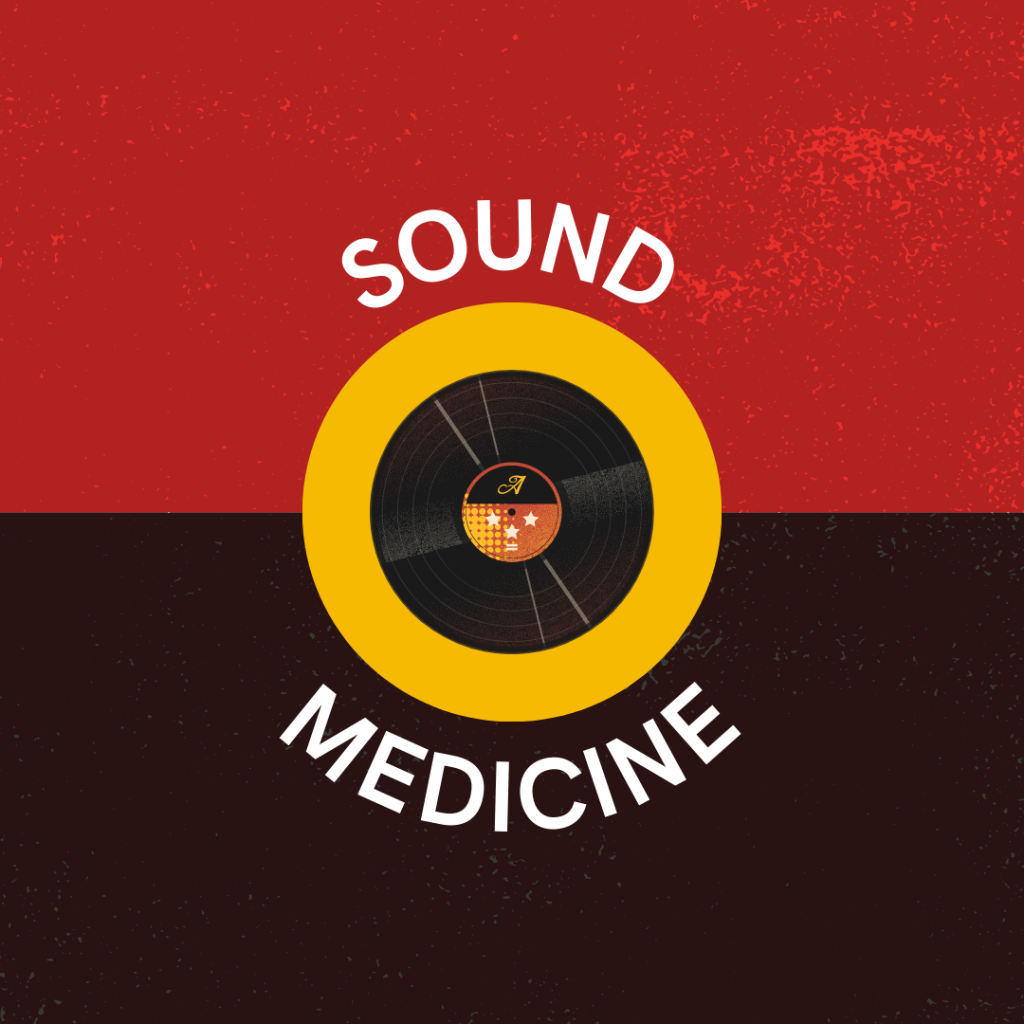
And I was like, “Oh, is that the girl?” And so I waited until after the show and talked to her and now we’re Facebook friends. But I was like, “I appreciate that” because I didn’t really have too many Native friends in the scene. One of my best friends used to dance with me alot in Oklahoma but, you know, you go somewhere else and I’m usually the one person in the room, right?
M: Right. Exactly!
T: Like if I look around right now, I’m probably the only Native person…but I get used to that – whatever. So it was nice when you get to be with people, like, in a similar situation…
M: Totally. 100%. Now I think, with that said, there’s also that unspoken presence as well, right? As a DJ, you talk about mixing genres and mixing records, but there’s also the mixed-blood, right? Those of us that, you know, have mixed-blood, but may not be enrolled, may not necessarily be accepted in the sovereign nations, so how do you speak to that? As a mixologist, how do you speak to that with respect to the mixed-blood people and how they express themselves whether in the underground culture or in the mainstream culture?
T: Yeah, no, it’s definitely difficult. It’s a touchy situation because…there’s definitely colorism and whatever within indigenous cultures – (in) the Black community for sure. But, like – I don’t know – I think there’s something that you can get from all the cultures and all the different music. A shift sharing is a big part of our culture too. Like, someone comes into your home, you’re sharing food; so, as a DJ, you’re sharing…the music, the love – so I don’t know.
M: It’s something to put out there – something that’s maybe not discussed as often as it should be, but I think that the arts have always been a means to at least communicate the reality of such situations that ultimately bring that medicine that the tribes do talk about. A lot of times, the more difficult conversations, the more difficult confrontations, the more difficult situations, both within and beyond First Nations communities, can bring about that medicine, right? Sometimes you have to break the bone and reset it correctly in order for it to grow in its proper nature.
T: Yeah, no, and I think that there’s alot of things that we can all learn from each other and that was the bad thing about what happened in this country when it was “founded”, right? People were already here, but we’re gonna say, in quotes, “founded”. If everyone had tried to get along, I think that things would be way better; but it’s always “us against them”, “who can you trust”, “blah blah blah”…
I prefer the places where you can have some acceptance because alot of times, with Native cultures, there’d be wars going on – whatever, but if someone was captured they were brought into the community, right? Like, “OK, you’re one of us now,” back in the day, you know? So I feel like there’s that whole, like you were saying, acceptance, tribalism – whatever, like “you’re one of us now.” That’s kind of how it is in the dance music community, like “Oh, you like drum ‘n bass? You’re one of us now.” Because, like, we’re few and far between, I feel like.
K: Totally, and speaking of medicine, for me personally, drum ‘n bass has always had somewhat of a healing impact and place, and effect in my life. Do you feel that drum ‘n bass has that capacity to heal some of those divisions or some of those wounds that exist within the First Nations community as well as beyond the First Nations community?
T: Oh yeah, for sure, I mean, there’s musical therapy, right? Like, there’s people that specialize in that stuff. So yeah, I feel like the more we share, the more we create, the more we’ll have in common. You know? That’s where we find our common ground, is on the dance floor.
K: That’s cool. Do you see yourself, in the near future, maybe bringing the drum ‘n bass culture – sound – maybe into the pow-wow community or somehow, you know, bringing it a little bit closer?
T: It would be cool just because I feel like there’s not enough…like you’ll see – especially in the UK, right? – you’ll see alot of record labels or song titles that borrow from tribes, but they still have that weird, stereotypical view of what that means ‘cause they’re not around it. That’s fine, they’re in the UK – whatever, but there’s this one kind of crazy…I’ve seen it before, Redskin Records is the name of it. I’ve seen it. The caricature is not very flattering. People have called them out on line but, right now, if you say something, like, “Oh no, ‘woke’ is a bad word.” It’s like, “no, you’re just trying to say this is not how you need to be talking about people, representing people”; but, of course, it’s like people are still set in their ways, right? So, things like that, I think there’s still a long ways to go. People just don’t know that sensitivity ‘cause they’re not around it all the time, right? So, yeah, it’d be cool to have more representation in the scene. Bring more people into it – whatever.
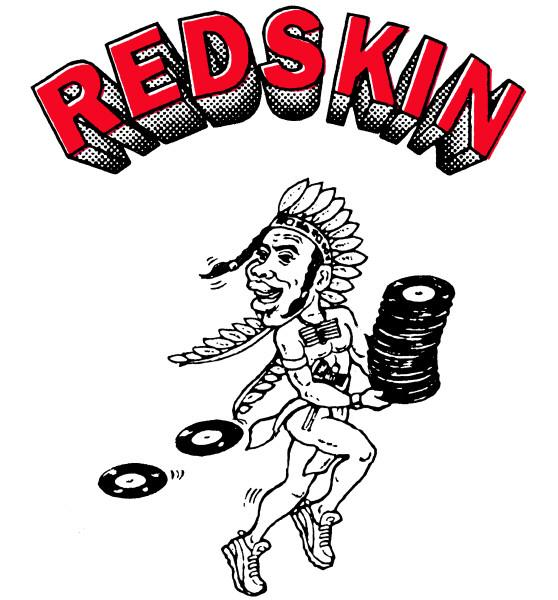
Boycott Redskin Records!
T: And, like, speaking of, like, indigenous cultures – I’ve never played for a crowd, right (?), that’s like mainly indigenous or like mainly even more than just me, right?
M: Right.
T: But someone reached out to me this past year – and I haven’t done it yet, but I’m actually gonna play for this Native American museum (Eiteljorg Museum) in Indianapolis. I’ve never done anything like this…but I was surprised because someone knew I was Comanche and they’re like, “Hey, we’re looking for an indigenous DJ and there’s one in Chicago”, so I’m actually gonna go there in November to help with this exhibition, so it’s gonna be, like, the first time I’ve played for something like that. I’m excited. I’m gonna pick out different music, obviously, but still, you know, some good tribal music, world music. I feel like I could also expand it a little bit.
M: Yeah, definitely. No doubt, absolutely. I think the world music community, there’s a place for you in that community. I know they have their festival comin’ up here soon. That’s why I mentioned Rebel Diaz – they’re part of that. They’re celebrating like 50 years of an uprising (coup) in Chile.
T: OK cool.
M: Yeah, I think that’s an avenue that could definitely serve as a bridge between, you know, the First Nations community and the underground jungle/dnb community.
T: And also in that spectrum, too, I really love Brazilian music. When I was like…you know, early 2000’s there was alot of Brazilian drum ‘n bass that came out. I was so inspired by it that I actually did study abroad in Brazil. I used to DJ down there, but if you look at the USA and Brazil there’s alot of parallels of indigenous culture, settlers came in, slave trade was happening, and it was really interesting to see how the music – you know, kind of similar. We’ve got jazz, they’ve got bossa nova, you know. I was very interested to see, like, how those cultures came about because of what they went through.
M: Well the majority of the African captives, actually, were landed in Brazil and Colombia.
T: Yeah, Salvador was where I was and that was a big part of what I saw there.
M: Exactly, exactly. So too often, in the US, we think we’re the epicenter of that, but we’re far from it. We’re a very small percentage.
T: Nope. Yeah. And that’s why I really wanted to go there – just to see how they treated their indigenous culture because it was definitely like they didn’t really talk about it. It was so weird. It was like, “Oh we’re all Brazilian” and I was like, “Nooo”, you know?
M: Yeah. I mean there was that immediate fusion of the African captives and the First Nations there and, for example, in Jamaica you have the Maroons. And in Canada you have the Métis and here, obviously, you have the Mixed-bloods here and all throughout the Americas, really. So it is a quote unquote “Pan-American” or Pan-Turtle Island diaspora that is both inclusive of indigenous and Afro-Indigenous communities, but also the integration of the two, which needs to be illuminated more; and I think, through music, we can heal some of those divides and get back to those roots.
T: And that’s my favorite part, just hearing what people do – that whole call and response with music. It’s like I’ll have this, I’ll have that – ooohh, let me put my little vocal element in there.” That’s f#cking bad@ss. I feel like that happens alot. So, it’s like we can relate more with music than, I feel like, in other different ways.
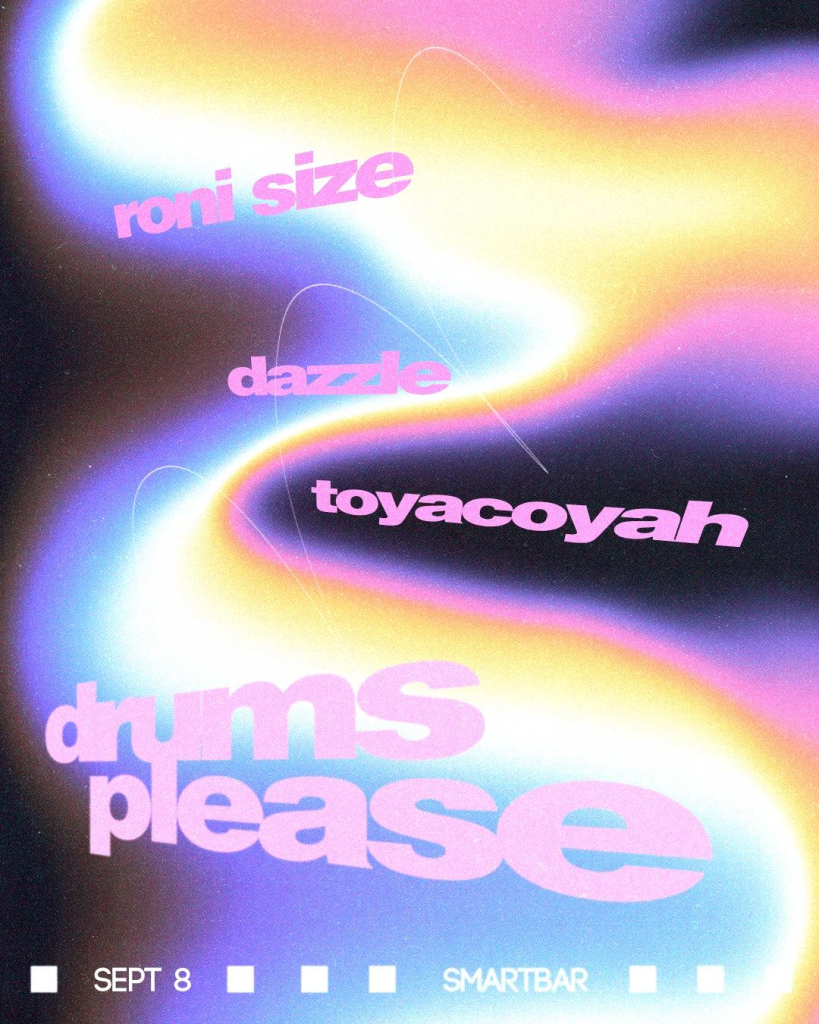
* Rebel Diaz brothers RodStarz and G1 grew up in Chicago and came up in The South Bronx, NY. They are the sons of political refugees from Chile who fled a CIA-funded dictatorship in the 1970s. They have been doing rebel rap since the Clinton era, sharing their story and those of their people; el barrio, the hood, the poor, los inmigrantes. The brothers' bilingual sound has been shaped by pieces of South American folk, house, and latin percussion gettin' down with boom-bap, breaks, and 808s.